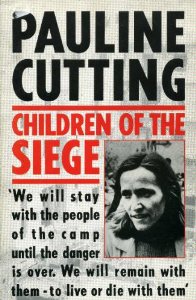Children of the Siege
Children of the Siege is a historical novel written by D. K. Broster. The novel is set during the Siege of Paris (1870-1871), a significant event in the Franco-Prussian War. The story revolves around the lives of children who experience the hardships and challenges of the siege.
Plot Summary[edit | edit source]
The novel follows the lives of several children and their families as they navigate the difficulties of living in Paris during the siege. The characters face food shortages, bombardments, and the constant threat of invasion. The story highlights the resilience and bravery of the children as they adapt to their harsh circumstances.
Main Characters[edit | edit source]
- Jean Dupont - A young boy who becomes a messenger for the French Army.
- Marie Lefevre - A girl who helps her family by working in a makeshift hospital.
- Pierre Martin - Jean's best friend, who dreams of becoming a soldier.
- Sophie Dubois - A resourceful girl who finds ways to gather food for her family.
Themes[edit | edit source]
The novel explores themes such as:
Historical Context[edit | edit source]
The Siege of Paris (1870-1871) was a pivotal event in the Franco-Prussian War. The siege lasted from September 19, 1870, to January 28, 1871, and resulted in severe hardships for the residents of Paris. The novel provides a detailed depiction of the historical events and the impact on the civilian population, particularly children.
Author[edit | edit source]
D. K. Broster was a British novelist known for her historical fiction. She wrote several novels set in different historical periods, often focusing on the human aspects of historical events.
Reception[edit | edit source]
Children of the Siege received positive reviews for its vivid portrayal of the siege and its impact on children. Critics praised Broster's ability to create compelling characters and her attention to historical detail.
See Also[edit | edit source]
References[edit | edit source]
External Links[edit | edit source]
Search WikiMD
Ad.Tired of being Overweight? Try W8MD's physician weight loss program.
Semaglutide (Ozempic / Wegovy and Tirzepatide (Mounjaro / Zepbound) available.
Advertise on WikiMD
|
WikiMD's Wellness Encyclopedia |
| Let Food Be Thy Medicine Medicine Thy Food - Hippocrates |
Translate this page: - East Asian
中文,
日本,
한국어,
South Asian
हिन्दी,
தமிழ்,
తెలుగు,
Urdu,
ಕನ್ನಡ,
Southeast Asian
Indonesian,
Vietnamese,
Thai,
မြန်မာဘာသာ,
বাংলা
European
español,
Deutsch,
français,
Greek,
português do Brasil,
polski,
română,
русский,
Nederlands,
norsk,
svenska,
suomi,
Italian
Middle Eastern & African
عربى,
Turkish,
Persian,
Hebrew,
Afrikaans,
isiZulu,
Kiswahili,
Other
Bulgarian,
Hungarian,
Czech,
Swedish,
മലയാളം,
मराठी,
ਪੰਜਾਬੀ,
ગુજરાતી,
Portuguese,
Ukrainian
Medical Disclaimer: WikiMD is not a substitute for professional medical advice. The information on WikiMD is provided as an information resource only, may be incorrect, outdated or misleading, and is not to be used or relied on for any diagnostic or treatment purposes. Please consult your health care provider before making any healthcare decisions or for guidance about a specific medical condition. WikiMD expressly disclaims responsibility, and shall have no liability, for any damages, loss, injury, or liability whatsoever suffered as a result of your reliance on the information contained in this site. By visiting this site you agree to the foregoing terms and conditions, which may from time to time be changed or supplemented by WikiMD. If you do not agree to the foregoing terms and conditions, you should not enter or use this site. See full disclaimer.
Credits:Most images are courtesy of Wikimedia commons, and templates Wikipedia, licensed under CC BY SA or similar.
Contributors: Prab R. Tumpati, MD

